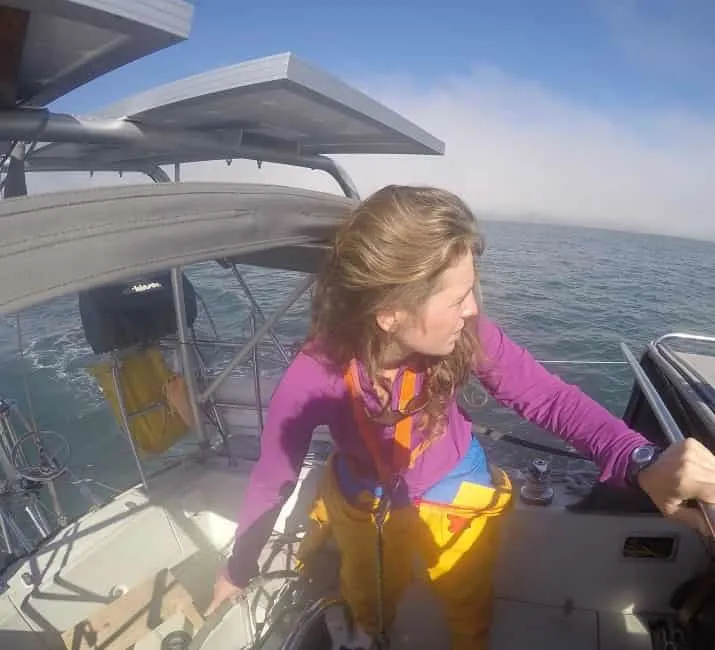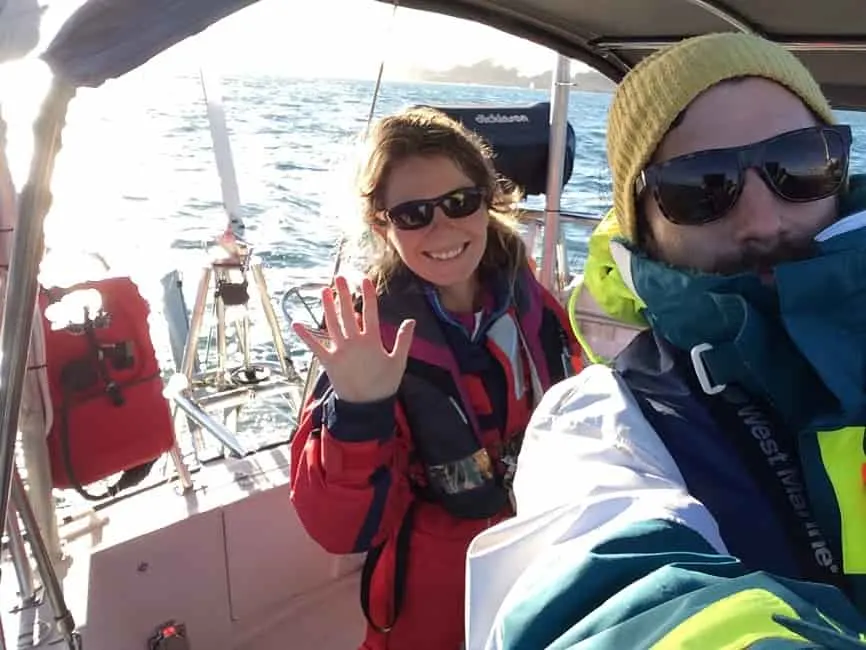You say you love sailing, but…
To the outside observer, sailors must appear to have a real masochistic bent. We terrorize dinner party guests with tales of harrowing sea conditions; with wave heights and wind speeds increasing commensurate to the amount of wine imbibed. We lament cantankerous engines, torn spinnakers, and exorbitant moorage fees. We’ve made considerable contributions to the English language, forging new words in the fiery crucible of the engine room (no, you won’t find these words in the dictionary). Suffice it to say, we can hardly blame our nearest and dearest for occasionally questioning our professed love and devotion to the sport of sailing. If we’re really being honest, we’ve probably, once or twice, asked ourselves the same question.

Replacing keel boats in 104 F !
The Fun Scale
“Love hurts,” or so the song goes, but how do suffering and seduction go hand-in-hand when it comes to sailing? I was recently introduced to a concept, familiar to hikers and climbers, called “The Fun Scale”, that makes-sense of this seeming contradiction. The scale consists of three types of fun:
Type I fun
Type I fun is fun-while-you’re doing it fun. For example, a gorgeous downwind sail on a sunny afternoon or beating your friend who owns a bigger/newer boat in a “friendly” race.
Type II fun
Type II fun describes an experience that is only fun, AFTER you stop doing it. Think sanding your hull with 500 grit sandpaper to achieve that racy bottom or navigating a tricky entrance.
Type III fun
Is miserable-in-the-moment and doesn’t get better with the passage of time fun (e.g. seasickness or rebuilding the head).

Filtering water out of our fuel tank by hand.
We laugh about it now
After learning about the Fun Scale, I found myself cataloging my sailing experiences, and found the majority of the not-so-fun moments landed in the Type II Fun category.
In one such instance, my husband Robin and I were motor-sailing in a remote South Pacific atoll when our engine suddenly cut out. We sailed onto anchor and discovered that we’d accidentally pumped brine from the watermaker into our fuel tank. After three hours of draining and filtering 40 gallons of diesel, we were hot, frustrated, and covered head to toe in fuel. A few hours later, we were laughing at the day’s events and glowing with a sense of accomplishment from overcoming a situation that could have been avoided if we were less incompetent.
From squalls to things breaking on the boat, I have plenty of fun memories that were anything but fun at the time. Of course, those are the experiences that have also helped me grow the most as a sailor, pushed my limits, and left me with a lasting sense of accomplishment and confidence in my abilities. For me, knowing that sailing is sometimes going to suck by design, removes a lot of my resistance to unpleasant moments. There’s comfort in knowing that today’s frustration or panic, is tomorrow’s “Type II fun”.

This post was adapted from an article originally published in the March 2017 issue of Cruising World Magazine.
Fiona McGlynn is an award-winning boating writer who created Waterborne as a place to learn about living aboard and traveling the world by sailboat. She has written for boating magazines including BoatUS, SAIL, Cruising World, and Good Old Boat. She’s also a contributing editor at Good Old Boat and BoatUS Magazine. In 2017, Fiona and her husband completed a 3-year, 13,000-mile voyage from Vancouver to Mexico to Australia on their 35-foot sailboat.

